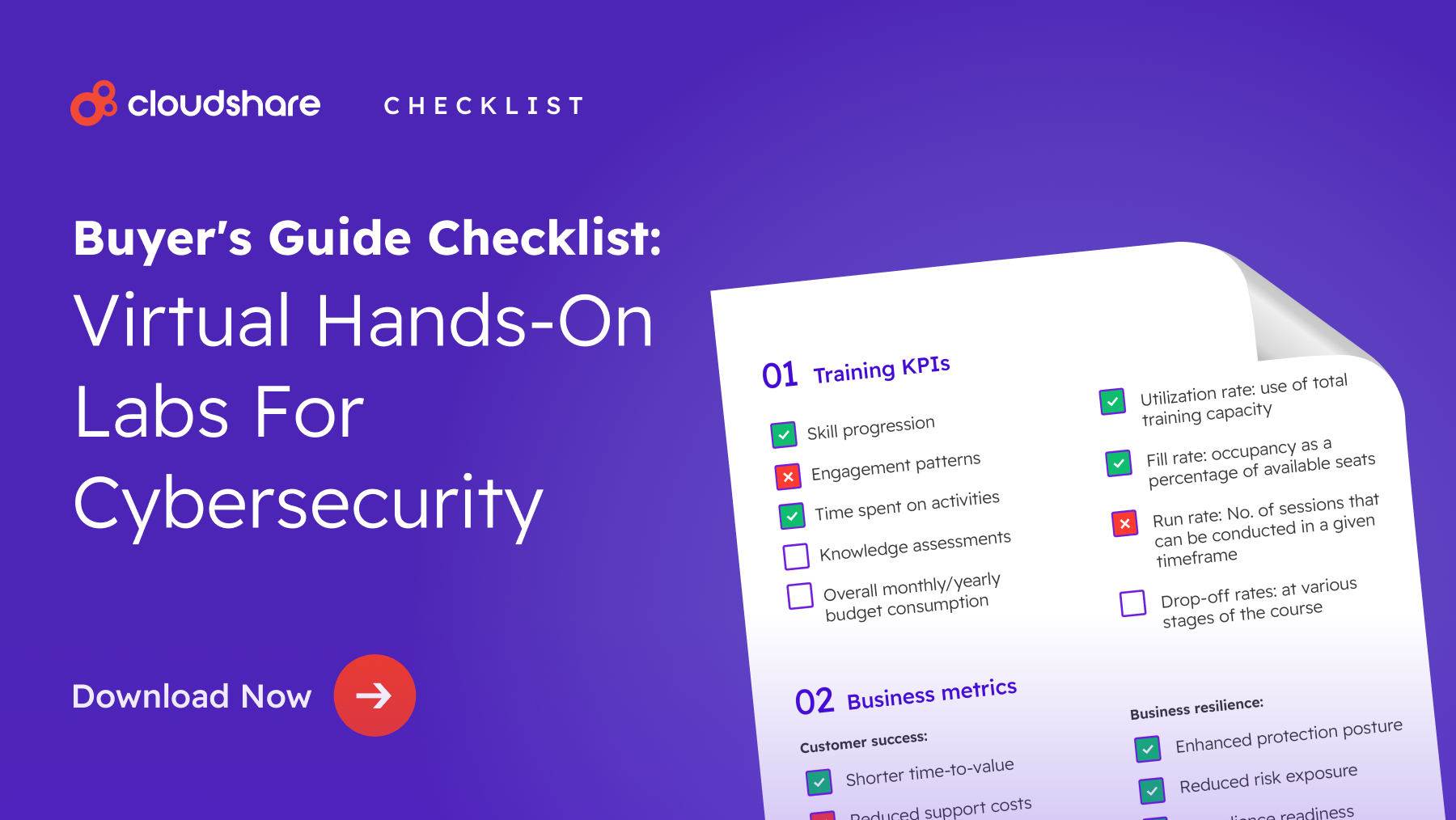Glossary
What Are Virtual Training Labs?
DEFINITION
Virtual training labs are cloud-based training environments that emphasize an online, hands-on learning experience over a passive classroom-based one. A relatively recent innovation, virtual training platforms have become increasingly popular in the tech industry to train both employees and clients on the complexities of new software.

CloudShare virtual training lab environment – classroom
What Are Virtual Training Labs Benefits?
Virtual training tools offer a variety of benefits that make them an attractive choice for customer training and software demonstrations:
- They offer a direct, interactive connection with the training environment.
- They can be accessed from any machine with an Internet connection.
- They are easily accessible by a larger portion of students.
- They have the benefit of in-person training with a real instructor.
The Advantage of Virtual Training Labs Over Traditional Classrooms
Interactive and immersive learning through virtual training is replacing the passive learning style of traditional classrooms and training environments for several reasons, including:
- Virtual labs are much less expensive since the travel expenses, IT resources, and laboratory maintenance necessary for classroom lessons aren’t as prominent.
- Without the need for physical travel, virtual classrooms are more convenient for both students and instructors.
- Physical classrooms are difficult to scale for larger groups of students as the cost of scheduling meetings rises exponentially with more clients.
- Virtual environments and lessons can be taken anywhere around the world using a simple browser.
- The interactive nature of virtual training labs enables the optimal conditions for knowledge retention.
Why Virtual Labs Are More Efficient
The tech industry often trains its clients on how to use new software through virtual means since learning retention is consistently higher. Virtual training tools encourage the following:
- Learning by doing rather than watching. A University of Chicago study revealed that physical training had a larger impact on student skill than passive learning in the field of science. It’s no different when it comes to training customers to use your software.
- Replicating realistic situations. Expect a stronger understanding to develop in learners when training replicates scenarios that they will experience themselves.
- Virtual environments. Virtual labs allow instructors to create an active learning environment by answering the students’ questions and communicating through the cloud.
- Desktop sharing with the instructor. Instructors can monitor multiple screens at once and ensure that their learners are approaching tasks correctly.
Back to Virtual IT Labs Glossary



